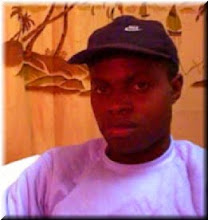We have to know that when bending occurs, the steel bar is strained within a certain section. The strain increases along the cross-section of the bar with the least strain closer to the direction
of bend and the maximum strain away from the direction of bend.
Some people have seen these strains to be about 0.02.
In bar bending schedules (BBS), this strain item is dealt with when dealing with bend. The bending in this case is for anchorage. In whichever case, I intuit, the strength in the area of bending may be reduced but not enough to be weaker than the bond between the concrete and steel bar surface. That may be the reason why bending in codes continue to be.

Caption from a dissertation chapter 4 "CONCRETE-STEEL BOND MODEL”
Well, in Uganda we mostly use twisted bars.
But there is another scenario at play: working with bars already embedded in concrete. What does this mean to the concrete already cast,
- will concrete cracks/spills be induced when the bars protruding out of the concrete are bent close to the concrete
- will concrete strength be affected by heat when heat, say heat from welding, onto the bars extends to the concrete sections nearby.
Does any of these loopholes affect the composite strength? It is indeed a real question to ponder on when considering that during design, so many factors of safeties are included in various stages of the calculations which I intuit should be enough to take care of these ‘minor’ holdbacks. But I still reserve the comment to certain concrete sections where there is a high degree of shear stress such areas as where concrete staircases begin/end, where concrete domes shoot off from a ring beam. But for areas such as starter bars, this really should be safe.
What do the others say:
One article (ref 1) states: that cold bending and straightening of rebar embedded in concrete does not weaken the bars if they are not bent through an angle greater than 90 degrees and the procedure is used only once. This was after conducting 56 tensile or stress tests, on rebar manufactured in New Zealand.
In ACI 318-77: 7.3.1: All reinforcement shall be bent cold, unless otherwise permitted by the Engineer.
In ACI 318-77 7.3.2 : Reinforcement partially embedded in concrete shall not be field bent, except as shown on the design drawing or permitted by the Engineer.
In ACI 318R-77, 7.3.2 "...The inspecting engineer must determine whether the bars can be bent cold without damage, or if heating is necessary. If heating is required it must be controlled to avoid splitting of the concrete or damage to the bars."
In an ACI Journal (ref 3): it recommends pre-heating rebar before gently and gradually bending it.
In a concrete international journal (ref 4): it was not necessary to use heat before bending the rebar. However, they only tested #8 (1" diameter) bars.
In a rebuttal to Ref 3 to Lalik and Cusick, again in a concrete international journal (ref 5): that it was hazardous to restraighten cold rebar.
Based on these and other studies, the Concrete Reinforcing Steel Institute concluded that: reworking bars entails some risk; #8 or smaller bars can be successfully field bent/straightened at temperatures above 32° F; rebars #9, #10 and #11 have a better chance of being successfully bent/straightened when preheated to 1400° or 1500° F and carefully manipulated; these conclusions do not apply to #14 or larger rebar.
After reviewing the three articles summarized here, as well as other studies, Monolithic's President David B. South said, "All of these studies show that care must be taken, but the smaller rebar sizes #3, #4, #5 and #6 usually can be bent cold as needed. However, care should be taken to make smooth bends, not kinks. Generally, the rebar is sufficiently forgiving -- especially #3 and #4. Larger bars (larger than #6) take special handling and may require heating."
So well, that does it.
REFERENCES:
Ref.[1]:If you want to know more, check the article "How Harmful is Cold Bending/Straightening of Reinforcing Bars?", by Authors José I. Restrepo, Senior Lecturer in Civil Engineering at the University of Canterbury, New Zealand and Member of the ACI (American Concrete Institute); Francisco J. Crisafulli, Senior Lecturer at the National University of Cuyo, Mendoza, Argentina and ACI Member; Robert Park, Professor of Civil Engineering, Deputy Vice Chancellor at the University of Canterbury, New Zealand and ACI Honorary Member.
Ref.[2]: ACI-318 is American Concrete Institute’s Building Code Requirements for Reinforced Concrete Structures
Ref.[3]: William C. Black in "Field Corrections to Partially Embedded Reinforcing Bars," ACI Journal, October 1973, pages 690-691
Ref.[4]: J.R. Lalik and R. L. Cusick in "Cold Straightening of Partially Embedded Reinforcing Bars," Concrete International, July 1979, pages 26-30
Ref [5]: L. A. Erasmus in "Cold Straightening of Partially Embedded Reinforcing Bars--A Different View," Concrete International, June 1981, pages 47-52.



